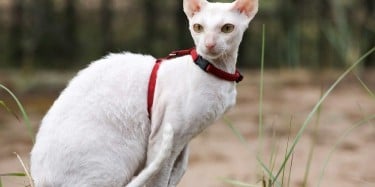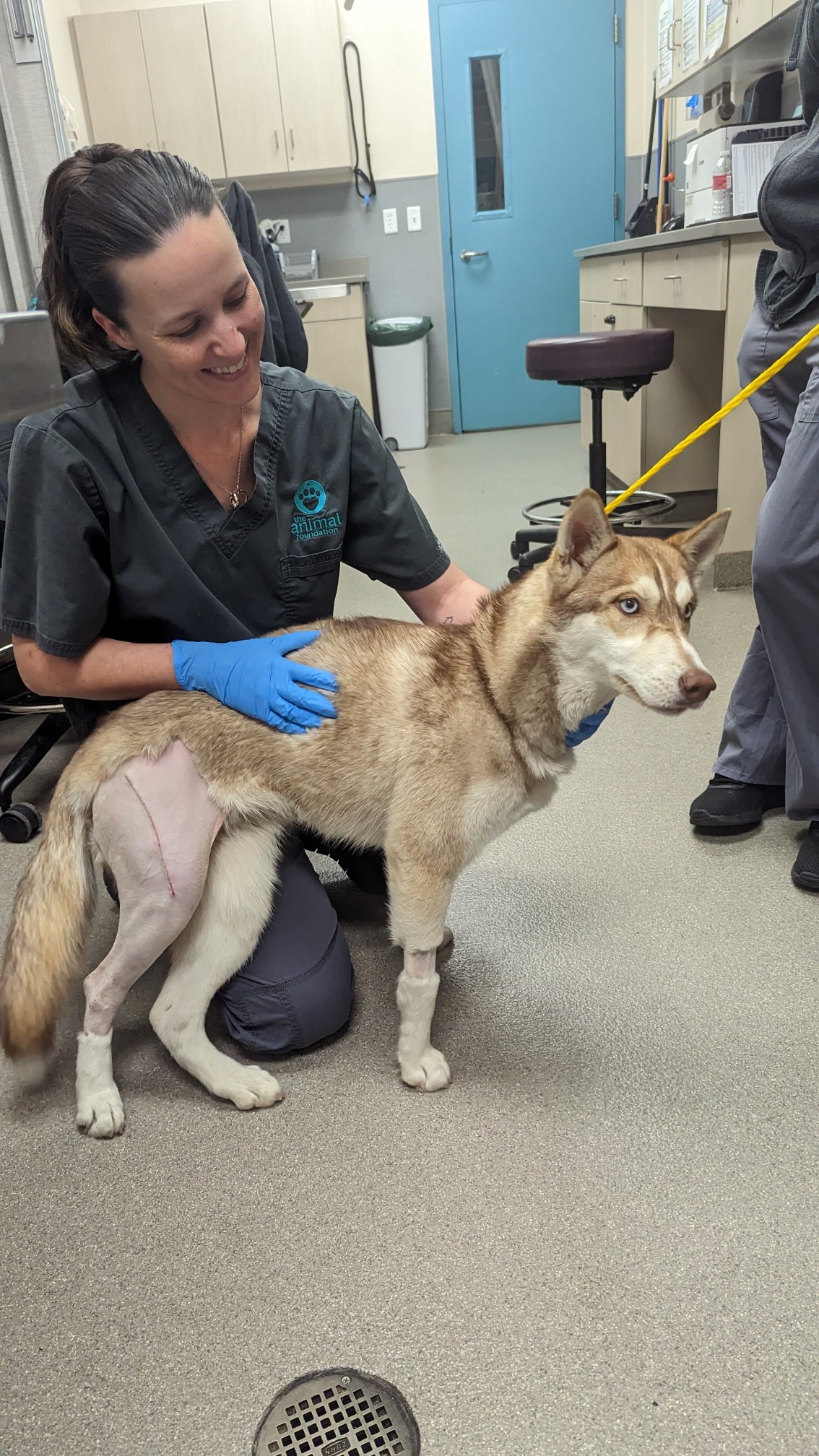
CORNISH REX CAT BREED
34SHARES380VIEWSShare on TwitterShare on Facebook The curly-coated Corni

The curly-coated Cornish Rex cat is a very unique and surprisingly energetic breed that is known for being an outgoing, active family member. These cats originated from a spontaneous mutation in Cornwall, England, during the 1950s. They are well-liked in the US these days.
In addition to their short, curly coats, Cornish rexes are known as the greyhound of the cat world due to their long legs and tuck-up, which sets them apart from other breeds and gives them an unforgettable appearance. In today’s fast-paced families, these unusual cats prove to be easy-going and fascinating friends.
Find out more about the temperament, care requirements, and history of the Cornish Rex breed.
BREED OVERVIEW
PERSONALITY: interactive, playful, and affectionate
WEIGHT: Up to 10 pounds
LENGTH: 18 inches
COAT LENGTH: Short hair and curly hair
COAT COLORS: Black, blue, lilac, brown, chocolate, red, cream,
COAT PATTERNS: Bicolor, calico, tabby, color-point
EYE COLOR: Gold, green, blue
LIFESPAN: 18 to 20 years
HYPOALLERGENIC: Yes
ORIGIN: England
Characteristics
Even though the Cornish rex is a fully grown cat (more than a year old), it doesn’t take long to discover that despite its elegant appearance and willowy limbs, this cat has a playful nature and can act like a kitten.
The rex is a laid-back dog that enjoys spending time with family. When anyone else is up for a game, they’re eager to play and interact. It’s also okay to pet and take lap naps, which is fortunate because a Cornish rex’s silky, curly coat makes cuddling with one almost impossible.
Some Cornish rex cats, perhaps because of their Siamese ancestry, are vociferous communicators. Because of their exceptional adaptability and ability to thrive in a range of settings, these cats are even used in therapy.
Breed History
This cat breed, which originated in Cornwall, England in the 1950s, gets its name from that area. A genetic mutation gave birth to a kitten with an extraordinarily curly coat and a distinctive long-limbed body structure that attracted attention, and this was the earliest known ancestor of the Cornish rex. The father of the cat was never identified, but the mother was a British shorthair.
After consulting with a geneticist, Nina Ennismore, the kitten’s owner, made the decision to breed Kallibunker—the kitten’s name—back to his mother when he reached adulthood. Three kittens were produced as a result, two of which had the recessive gene for the curly coat. In order to increase their genetic diversity, these early Siamese, Burmese, and British shorthair cats were bred to.
In 1957, a couple of Cornish rex cats were brought into the US while the breed was still developing. This turned out to be lucky because in the late 1950s, Kallibunker’s progeny almost vanished from England.
The American shorthair, Havana brown, and other cats were further crossed in the United States to help preserve the breed, which is now well-known for its attractive appearance, gregarious nature, and cute antics. The Cat Fanciers’ Association officially recognized the Cornish rex as a breed in 1964.
Cornish Rex Care
The Cornish rex’s stunning look and charming demeanor will draw your attention right away. To be sure you can provide your cat with the necessary care, learn about the breed’s exercise and grooming needs before bringing one into your home.
Exercise
Cornish Rex Cats enjoy playing and exploring. Treat puzzles, plush mice and feather toys, and cat trees are things they like. But above all, they adore engaging in interactive play with people, especially children, and other animals. Make sure your cat can amuse themselves when you aren’t around to play with them, and make time to play with them every day. Give these cats window perches so they can see birds outside, wall perches for climbing, and scratching posts so they can stretch and maintain healthy claws.
Even more, these cats have been trained to perform a variety of activities, such as sitting, shaking, and waving. Many even enjoy playing fetch, and they’ve been observed picking things up with their paws. Specifically, they are
Grooming
One of the most distinctive characteristics of the Cornish rex is its curly coat, which is also one of its least maintenance needs. These cats are an excellent choice for allergy sufferers as well because of their short coats and low shedding levels.
Like all cats, the Cornish rex is an avid self-groomer. However, this breed completely lacks guard hairs—meaning that the coat can sometimes become oily, especially around the chin and paws. If this is the case for your Cornish rex, you may need to bathe your cat regularly to keep them from feeling greasy to the touch.
Brush hair gently to prevent the tight curls from breaking. Regularly trim your Cornish rex’s claws, brush their teeth, and check their ears and eyes to ensure they are clean and healthy.
Without the protection of guard hairs or the insulation of a soft, downy undercoat, the Cornish rex often feels warm to the touch but is sensitive to either hot or cold temperature extremes. For the happiest, healthiest cat, keep yours indoors with adequate heating or air conditioning.
Common Health Problems
The breed originated from crossbreeding between several different cats, including Siamese, Burmese, British shorthair, American shorthair, and Havana brown breeds. Due to this fact, these cats enjoys long and healthy lives. Many Cornish rex cats are reported to live into their late teens, with some living above the age of 20.
Thanks to its different hereditary benefits, the Cornish rex isn’t particularly affected by many diseases and disorders found in other purebred cats. However, they might be prone to:
• Congenital hypotrichosis: This hereditary condition thins the fur on the head and body, which might result in baldness in these regions. Although there is no discomfort associated with this illness, your veterinarian may advise you to take precautions with your skin to avoid sunburn or excessive dryness. Hypotrichosis is a genetic illness for which there is no known cure, and as such, cats who have it should not breed.
• Progressive retinal atrophy (PRA): This is a condition that affects photoreceptors of the retina. It causes vision loss and can lead to blindness over time.
• Hypertrophic cardiomyopathy: This condition affects the left ventricle of the heart, affecting its ability to pump blood. Symptoms include weakness, difficulty in breathing, irregular heartbeat, and pale gums.
Appearance
Cornish rix are known for their large, wide-set of ears and egg-shaped face of this breed before looking into the uncommon arched back, narrow waist, and long limbs that make this cat the so-called greyhound of the feline family. Adding to the almost freakish look of the Cornish rex is the branded curly fur, arranged in tight rows along a slender body.
Diet and Nutrition
Usually, the energetic Cornish rex has a corresponding appetite. However, don’t let this flirtatious cat mislead you into believing that they always need their food bowl refilled. These cats are not picky eaters, and they can quickly gain weight if left unchecked. Depending on your lifestyle and your cat’s appetite, you may decide to free-feed your cat or not. Mealtime scheduling greatly simplifies weight management.
These cats will benefit from eating premium cat food, but they also like the occasional treat of fruits and vegetables that have been approved by their veterinarian. These can be served as sweets or as delectable accompaniments to their usual meals.
Where to Adopt or Buy a Cornish Rex
Cornish rexes cost $800 to $1,200 on average.
Is the Cornish rex the right cat for you? Learn more about this unique breed from across the pond. You will find that quality breeders, Cornish rex rescue groups, and breed interest clubs are often happy to share insights, tips, and funny stories about these comedic creatures.
Because of their unique and coveted appearance, unwanted rex cats rarely end up in shelters; instead, they are often re-homed through breeder networks.
Cornish Rex Overview
The breed are sociable, loving and gets along well with children and other pets, and are properly taking care of and given the attention they crave for. The Cornish rex are flexible but mostly indifferent.
This is a case of don’t judge a book by its cover, because despite their slender frame and elegant appearance, the Cornish rex is an athletic feline with an affectionate personality. Like all cats, this breed requires daily attention and plenty of owner interaction, and thrives on mentally elevating games, training, and puzzles.
If you decide to add this friendly feline to your home, you’ll be rewarded with a pet that is both amusing and elegant. Just be prepared to have a serious cuddle buddy, since Cornish rex cats will actively seeking the attention and affection of their owners.
Pros of Cornish Rex
• Beautiful, attractive and it’s uncommon curly coat
• Affectionate, loving and sociable
• Generally healthy and lives longer
Cons of Cornish Rex
• Needy and desires for attention
• Prone to a genetic skin and coat disorder
• Large appetite may lead to obesity if overfed
More like this
-
How Our Furry Friends Transform Our Mental Health: A Love Story
 33SHARES363VIEWSShare on TwitterShare on Facebook Hey there, kindred spiRead more
33SHARES363VIEWSShare on TwitterShare on Facebook Hey there, kindred spiRead more -
So You Want to Adopt a Fee-Waived Dog
 Jul 31, 2018 The Animal Foundation in Las Vegas is a great place to find the perRead more
Jul 31, 2018 The Animal Foundation in Las Vegas is a great place to find the perRead more -
Sable
 Jan 11, 2023 Sable's Surgery was a Success!GOOD NEWS!Sable’ssuRead more
Jan 11, 2023 Sable's Surgery was a Success!GOOD NEWS!Sable’ssuRead more -
Fostering a Pet Extends a Lifeline to Animals in Need
 Mar 13, 2018 Fostering a pet in need can be one of the most rewarding experienceRead more
Mar 13, 2018 Fostering a pet in need can be one of the most rewarding experienceRead more -
Earl Has Been Adopted!
 Oct 18, 2023 Earl is Living His Best Life in His Forever Home!Earl stoleRead more
Oct 18, 2023 Earl is Living His Best Life in His Forever Home!Earl stoleRead more





